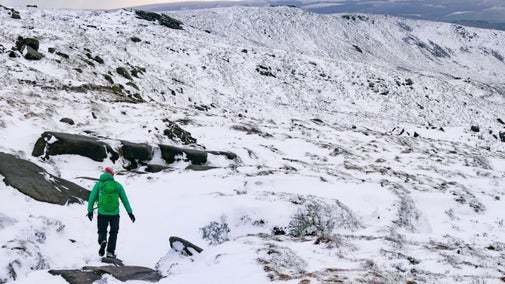Derwent Valley and reservoir walk
The Peak District & Derbyshire
Discover many key Peak District habitats as you walk alongside the Ladybower Reservoir, through farmland and up steep wooded cloughs. You'll emerge high on top of the moors to panoramic views of the Derwent Valley and much of the High Peak area. Look out for golden plover, mountain hares and many other species on the way.
Start point
Fairholmes car park, grid ref: SK173893Trail information
Plan ahead
There are no bins in the countryside, so please take all litter home with you. Barbecues, campfires and outdoor cooking equipment is not allowed due to fire risk. If you wish to stay overnight, please book in at a campsite, as wild camping is not allowed in this area.
More near here
Kinder Scout circular walk
Leave the car behind on this exhilarating walk that starts from Edale train station and takes you high up on the windswept Kinder Plateau. Plan your walk before you leave home, so that your visit is one that is enjoyable and kind to the landscape at the same time.

Edale Circular Walk
This low level walk through the Vale of Edale leads you through vast, open fields as well as parts of the Pennine Way, following streams and stone-flagged paths.

Below Kinder Scout: A circular walk around Kinder reservoir
This 5.2-mile circular walk takes in the tree-lined avenues around Hayfield as well as the heather-covered moors of Kinder Scout and the reservoir.

Mam Tor circular walk
This circular walk from Mam Tor in the Peak District takes in some of the most dramatic scenery in the Edale Valley.

Get in touch
near Hope Valley, Derbyshire, S33 8WA nearest postcode area
Our partners

We’ve partnered with Cotswold Outdoor to help everyone make the most of their time outdoors in the places we care for.
You might also be interested in
Walking and cycling in Kinder, Edale and the High Peak
Discover the best views of the Peak District on a refreshing walk or bike ride through Kinder, Edale and the High Peak in Derbyshire.

Things to see and do at Kinder, Edale and the High Peak
Discover breath-taking views of the Peak District, natural landscape features and the best spots for wildlife watching at Kinder, Edale and the High Peak.

Visiting the Peak District with your dog
Walking with your dog is a great way to enjoy the scenic walks and stunning views of the Peak District. Here is some information and guidance about visiting the area with your dog.

Cotswold Outdoor: our exclusive walking partner
Learn about the National Trust’s ongoing partnership with Cotswold Outdoor. Find out how they help us care for precious places and the exclusive discount available for National Trust supporters.

Staying safe at National Trust places
The special places in National Trust care sometimes come with a few risks for visitors, be it coastline or countryside. Find out how to keep safe throughout your visits.

Walking in the Peak District and Derbyshire
Discover the best walking routes around the Peak District and Derbyshire for walkers of all abilities, from peaks and lakeside paths to expanses of moorland.

